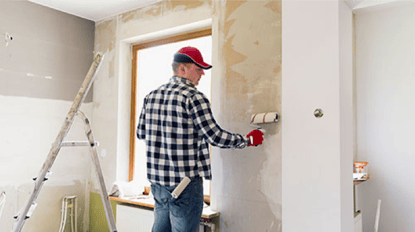 Whether wind, snow, hail, or a hurricane damages your home, recovering from a storm is a complicated process. Even if the damage was minimal, figuring out how to repair the problem, receive compensation for your loss, and deal with insurance claims can be overwhelming. The following tips can help you navigate the situation:
Whether wind, snow, hail, or a hurricane damages your home, recovering from a storm is a complicated process. Even if the damage was minimal, figuring out how to repair the problem, receive compensation for your loss, and deal with insurance claims can be overwhelming. The following tips can help you navigate the situation:
Collect information
To bolster your insurance claim, you will need proof of the storm damage, and time is of the essence. It is better to start documenting the damage via pictures and notes as soon as you can, notes Thompson. Your insurance policy may have coverage limitations, so it is important you present a comprehensive picture of everything the storm did to your home as well as the future problems it may create, like mold or compromised drywall, notes Thompson.
Contact your agent
Reach out to your insurance company that holds your homeowners insurance policy as soon as you can.
“The insurer can advise you about what repairs you should make right away to make your home habitable or prevent further damage,” according to Consumer Reports writer Tobie Stanger.
This is important because the sooner you reach out, the sooner you can have the damage assessed and the repair work started. Depending on the severity of the damage, the earlier you start the process, the quicker you and your family will be able to return home. Even if it is safe to stay in your home during the repair process, you will want the work done quickly so you and your family can return to your normal routine. Reaching out promptly may also be an insurance policy requirement, she adds.
Peruse your policy
Most likely, you have not reviewed your homeowners insurance policy since the day you bought it, and that is okay. Now, though, is the time to bust out the document and read it thoroughly so you understand what it covers. If you cannot access the paperwork, ask your agent for details or it may also be available on your account page online. This will give you a better understanding of what you will need to cover.
Prioritize health and safety
The initial damage from the storm can lead to unsafe living conditions. For example, loss of power due to downed power lines or water seeping into your basement are hazardous situations. It is important to focus on the health and safety of yourself and your loved ones first. SFGATE Home Guides writer Van Thompson suggests evacuating your house if the damage poses a risk to your safety or health and evaluating the damage to your home later. And, as hard as it is to stay away, do not go back to your home until it is ruled safe to do so.
Seek assistance
Even if your home was the only one on the block that sustained damage from a storm, remember you are not alone. Help is available to you and your family. If you need assistance locating a safe place to go, repairing damage, submitting a claim to your insurance company, or feeding your family, Thompson suggests contacting your local branch of the Federal Emergency Management Agency.
Picking up the pieces after a storm damages your home can be a daunting process. Remember to take it one step at a time: prioritize your safety, reach out to your insurance company, document the damage, and file a claim. With help from your insurance company and qualified professionals, your home can return to its former glory.